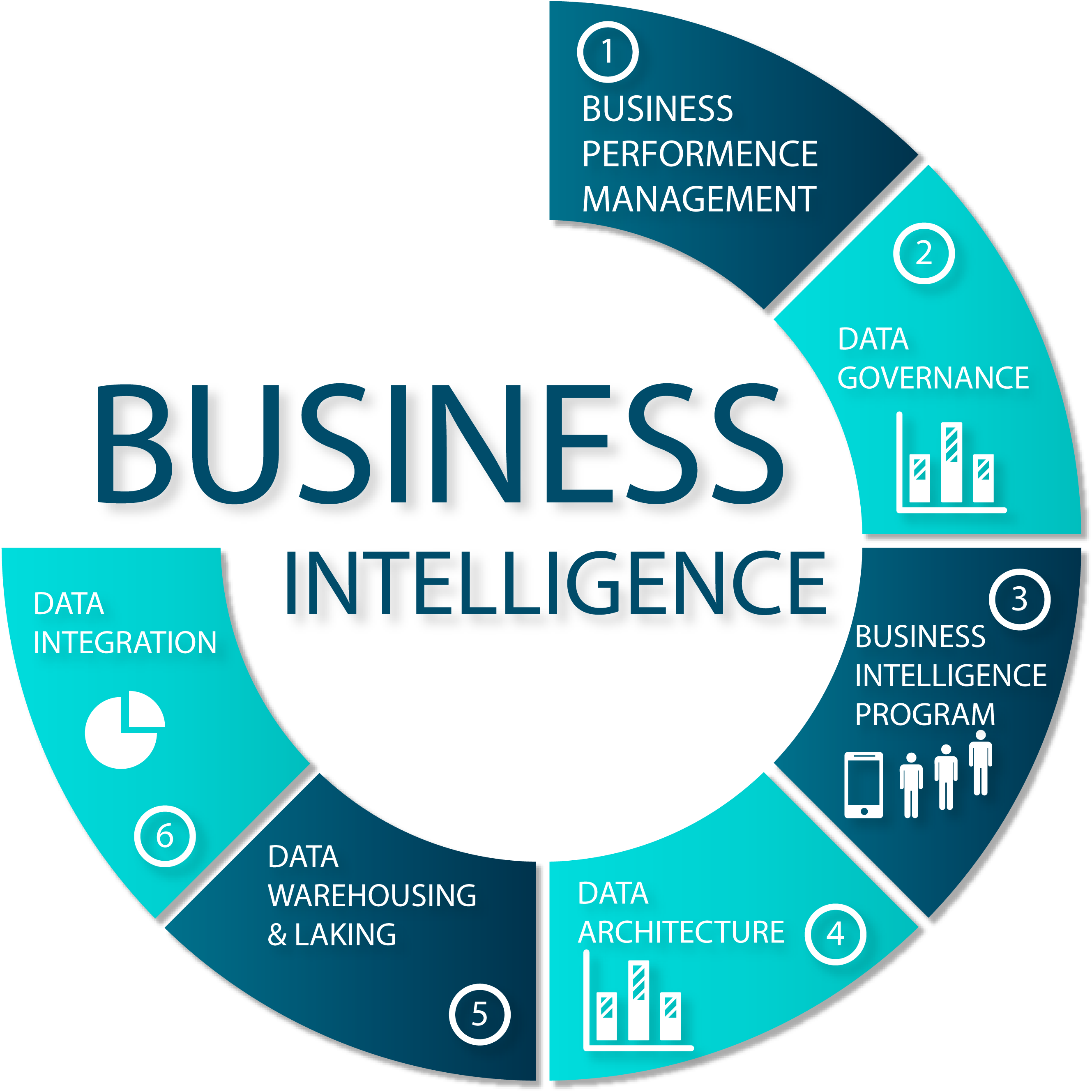Bilytica # 1 is one of the top BI to stay ahead in today’s competitive landscape. BI tools have changed the business landscape by converting data into insights and insights into strategies. But what real help does BI bring to the business? Which areas does it help improve in business performance? This blog on BI in the optimization of business operations, enhancement of decision-making, and growth through visibility, operational efficiency, and strategic insights.
Click to Start Whatsapp Chat with Sales
Call #:+923333331225
Email: sales@bilytica.com
Bilytica #1 BI

What is Business Intelligence and Why Do Businesses Use It?
Business Intelligence refers to a set of technologies, tools, and processes that collect, store, analyze, and visualize data to support better business decision-making. BI is not the analysis of data but the extraction of raw information into valuable insights to enable business organizations to understand their operations, customers, and markets.
On the other hand, a solid Business Intelligence platform can aggregate information coming from various sources into just one source of truth that stakeholders will base their decisions on. Most BI tools come with dashboards, reporting features, data visualization, and advanced analytics capabilities to smooth the decision-making and overall performance process.
Improved decision making through insights driven by data
Among the most significant advantages of BI is that one gets to make good decisions through facts and evidence. In most organizations, most people still have a natural gut feel in carrying out their decisions and doings. BI changes this in two aspects: by providing stakeholders with data that is exhaustive and also updates instantly, they can make decisions or choice.
For instance, BI dashboards can quickly illustrate key metrics, making it easy to point up trends and easily recognize issues for corrective action. More importantly, BI enables companies to answer some of the most important questions, such as:
Process Efficiency Improvement
Business Intelligence will uncover bottlenecks, inefficiencies, and areas of process optimization. The analysis of performance metrics will indicate where improvements are needed. Examples:
Manufacturing and Production: BI can unmask places of inefficiency in the production line and enable managers to optimize workflows, reduce waste, and increase throughput.
Sales and Marketing: Business Intelligence Conversion and campaign success rates can be one of the most accurate ways to ensure and focus on the most effective strategies for maximum ROI.
Supply Chain Management: Business Intelligence tools monitor inventory levels, lead times, and supplier performance, which helps businesses reduce stock outs and improve orders with better order fulfillment.
This can become cost-saving and faster services, directly impacting the bottom line of a company. The process makes every single process more efficient so that organizations can build productivity without adding costs with the help of BI.
Improved Sales and Marketing Intelligence Increases Revenue
BI promotes the development of sales and marketing strategies for an organization by raising revenue and market shares. BI tools analyze information about the customers in finding buying patterns, preferences, and behavior. Companies are able to target the right audience by creating personalized marketing campaigns resonating with target audiences as the organization becomes insightful into its customers’ demographics and behavioral patterns, which thus yields higher engagement and conversion rates.
Product Line Optimization: BI tools track what best-selling items and services are for an enterprise, so an enterprise can focus its efforts on high-performing items and eradicate those that have little value to profitability.
Sales Trend Forecasting: Predictive analytics through BI tools will enable companies to predict demand in the future, so they remain fully stocked at the right time with the correct products. This helps maximize sales.
Business Intelligence allows business houses to grow revenue while maximizing marketing ROI when their sales and marketing strategies are aligned with data insights.

Customer Experience Improvement
A customer-centric marketplace today requires a business to pay heed and work to be more responsive to its customers and maintain loyalty and competitiveness. With the help of Cloud Implementation tools, organizations can connect and integrate data coming in through various touchpoints, such as customers interacting with the websites, likes, comments on the social media platform, or through customer care records. This rich data can help improve the customer experience, and BI can thereby help the business in different ways:
Customer Segmentation: As the different types of customers have varying requirements, it is comprehended by the application of BI tools and therefore, the approach is tailored to the needs of certain groups.
Personalized Recommendations: Business Intelligence tools can provide personalized product recommendations using analysis of past purchase and behavior, which help improvement in satisfying customers and building loyalty toward the brands.
Improved Response Times: By analyzing support tickets and call center data, a BI tool quickly identifies the common issues among customers, thus prompting companies to be proactive and improve response time.
Better customer experience is actually reflected in better customer retention and, therefore, higher lifetime value for each customer.
Bettering Financial Performance through Real-Time Monitoring
Real-time monitoring of financial metrics using BI tools places a business in control of its finances and allows it to effect rapid adjustments. The much-needed transparency allows business organizations to identify financial risks in an early stage and make cost-cutting measures where appropriate. Some of the ways BI improves financial performance include:
Budget Monitor: Using BI dashboards, the manager will be able to track in real time his expenditure on budgets and immediately know if there’s an over-spending which can easily be corrected.
Revenue and Expenses Analysis: Companies’ revenues and expenses are analyzed through BI. From this, they can easily know profitable areas and reduce unnecessary costs.
Cash Flow Forecasting: With the predictive analytics features, cash flow trends will be known so that a company will be well prepared with adequate resources in terms of money to meet all the working expenses.
All this translates directly into improved financial performance as companies can then re-invest growth initiative funds elsewhere for increased performance.
Enabling Strategic Plan and Competitive Advantage
The base for strategic planning is provided by BI, supplying data that enables the identification of trends, market change forecasts, and the measurement of the effect of various business initiatives. Therefore, since there is the availability of historical as well as current data, BI allows organizations to establish achievable goals, distribute resources wisely and benchmark against competitors.
Some of the ways BI will contribute to strategy planning include the following:
Market Opportunity Identification: BI tools can use consumer trends, regional performance, and a myriad of other industry changes to identify unknown opportunities for companies.
Risk Analysis: Through data-driven risk assessment, companies will find that they have gotten a much clearer picture of possible areas of failure and will subsequently craft mitigation strategies that could help reduce the chances of costly mistakes.
Track competitor performance: BI tools enable the business to track what competitors are doing, keeping the organization agile and responsive to changing the strategies to maintain its competitive position.
By supporting strategic planning, BI enables the companies to prepare for and seize opportunities and to continually improve its market positioning.
Innovation to Data Culture
In many organizations, BI goes beyond being a tool; it is a catalyst for creating a data-driven culture that values intelligence in decision-making processes and continuous improvement. When the employees at all levels have access to the BI tool, it will catalyze closer embracing the company’s results and give employees the leverage to make data-driven decisions within their lines of work.
Data-driven culture encourages:
Innovation: With accessible data, the workforce can try, test hypotheses, and explore new possibilities based on well-grounded insights; therefore, innovation and creativity become possible.
Accountability: Where performance metrics are clearly defined, employees as well as managers are held more accountable for the outcomes that demand more responsibility and ownership.
Continuous Improvement: Business intelligence tools aid teams in measuring performance over time. It allows the impact that perhaps initiatives have created, and this actually drives continuous improvements towards better outcomes.
Enhancing Business Performance using BI: Supporting Long-term Sustainability and Growth
By encouraging a data-driven culture, not only does BI assist in the improvement of business performance but also facilitates long-term sustainability and growth.
Self-Service BI for Powering Employees
Self-service BI: In self-service Power BI employees can directly access, analyze, and view data without depending on IT departments. This is the democratization of data that helps team members from sales to marketing human resource to operations teams pursue insights relevant to their role in terms of speed and independence with decisions.
Self-service BI enables employees when
Accelerate Decision-Making: No more waiting for reports-employees can now access and analyze data instantly, thus quicker and more informed decisions.
Fostering Ownership: By generating their own insights, employees become engaged and proactive towards their projects
Improving Collaboration: When data crosscuts departments, teams are better able to collaborate to foster a collaborative workplace.
The empowered worker’s contribution leads to an agile and responsive organization, generally resulting in better business performance.
Conclusion
Business intelligence is not a reporting tool rather it is a technology that transforms the operation in order to drive strategical planning and empower teams. BI converts data into actionable insights, allowing organizations to take informed decisions at the right time and obtain an impact. In short, from improving customer satisfaction and bettering financial performances, to incremental revenue and a culture of data-driven, BI is the way to long-term business growth.
For any business looking to enhance its performance, a BI solution is the silver bullet. As BI technology continues to evolve, the possibilities for businesses to discern more and move ahead of their competition will grow in the future, thereby making BI a valuable resource for the modern organization.
You can explore our other blogs
Generative AI, Power BI, BI
11-13-2024
Recent Posts
Categories
- Android App Development Services in Riyadh Jeddah Makkah Madinah Khobar Saudi Arabia KSA in saudi-arabia
- ASP.net MVC Development services in saudi-arabia
- ASP.net MVC Outsourcing in saudi-arabia
- Banking Analytics Solutions
- Banking Analytics Solutions
- Banking Analytics Solutions in Saudi Arabia
- BI Company
- BI Company in Saudi Arabia
- BI Consultant
- BI Consultant in Saudi Arabia
- bi consulting services
- bi consulting services in Saudi Arabia
- big data consulting services
- big data consulting services
- blog
- Business Intelligence
- business intelligence services
- business intelligence services in Saudi Arabia
- business intelligence solutions
- business intelligence solutions in Saudi Arabia
- Cognos Consultant
- Cognos consulting services
- Cognos consulting services
- Cognos Consulting Services in Saudi Arabia
- Cognos Services in Riyadh Jeddah Makkah Madinah Khobar Saudi Arabia KSA
- Cognos training
- Cognos training
- data visualization solutions
- data visualization solutions
- data visualization solutions
- data warehouse solutions
- data warehouse solutions
- data warehouse solutions in Saudi Arabia
- data warehousing services
- data warehousing services
- data warehousing services
- data warehousing services in Saudi Arabia
- Distribution ERP
- ERP
- ERP Software
- erp software solutions
- Hadoop services in Saudi Arabia
- healthcare analytics solutions
- healthcare analytics solutions
- healthcare analytics solutions in Saudi Arabia
- healthcare business intelligence
- healthcare business intelligence
- healthcare business intelligence
- healthcare business intelligence in Saudi Arabia
- Infographics
- Insurance Analytics Solutions
- Insurance Analytics Solutions
- Insurance Analytics Solutions
- Insurance Analytics Solutions in Saudi Arabia
- ionic app development services
- ios app development services
- IT Outsourcing Services in Riyadh Jeddah Makkah Madinah Khobar Saudi Arabia KSA in saudi-arabia
- Manufacturing Analytics Solutions
- Manufacturing Analytics Solutions in Saudi Arabia
- Microsoft Dynamics AX 365 Consulting
- Microsoft Dynamics AX 365 Consulting
- Microsoft Dynamics AX 365 Training
- Microsoft power bi consulting services
- Microsoft Power BI partner
- Microsoft power bi training
- Microstrategy Consultant
- Microstrategy consulting services
- Microstrategy consulting services
- Microstrategy Consulting services in Saudi Arabia Qlikview Consulting services in Saudi Arabia
- Microstrategy services
- Microstrategy training
- Microstrategy training
- Mobile App Development Services in Riyadh Jeddah Makkah Madinah Khobar Saudi Arabia KSA in saudi-arabia
- Oil & Gas Analytics Solutions
- Oil & Gas Analytics Solutions
- Oil & Gas Analytics Solutions in Saudi Arabia
- Oracle consulting services
- Oracle training
- Pharma Analytics Solutions
- Pharma Analytics Solutions
- Pharma Analytics Solutions in Saudi Arabia
- PHP Development Company in saudi-arabia
- PHP Development Services in Riyadh Jeddah Makkah Madinah Khobar Saudi Arabia KSA in Saud saudi-arabia
- Power BI services in Saudi Arabia
- Qlikview Consultant
- QlikView consulting services
- QlikView consulting services
- Qlikview Partner
- Qlikview services
- QlikView training
- QlikView training
- Retail Analytics Solutions
- Retail Analytics Solutions
- Retail Analytics Solutions in Saudi Arabia
- Retail ERP Software
- SAP BO Business Objects Consultant
- sap consulting services
- sap training
- saudi-arabia
- saudi-arabia
- saudi-arabia
- SharePoint Services in Riyadh Jeddah Makkah Madinah Khobar Saudi Arabia KSA in saudi-arabia
- Software Development Services in Riyadh Jeddah Makkah Madinah Khobar Saudi Arabia KSA
- Software Development Services in Riyadh Jeddah Makkah Madinah Khobar Saudi Arabia KSA
- Supply Chain analytics Solutions
- Supply Chain analytics Solutions in Saudi Arabia
- Tableau Consultant
- tableau consulting services
- tableau consulting services
- Tableau partner
- Tableau services
- Tableau services in Saudi Arabia
- tableau training
- tableau training
- Teradata Consultant
- teradata consulting
- Teradata services
- teradata training
- Uncategorized
- xamarin app development services in saudi-arabia
- تحليلات الأعمال السعودية
- خدمات حلول ذكاء الأعمال في السعودية
- خدمات مستودع البيانات في السعودية
